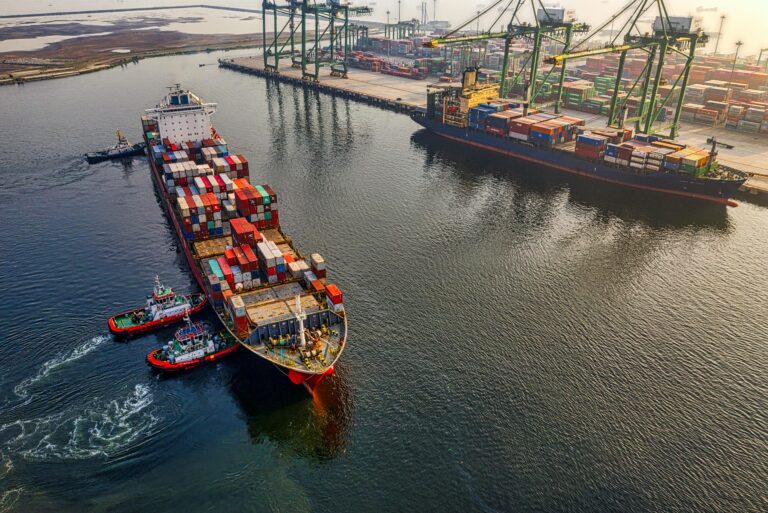By now, the story of the dramatic rise of ecommerce is almost like yesterday’s news. What started as a pandemic-driven trend is now a ubiquitous way of life that shows no sign of slowing down. Along the way, ecommerce has created new consumer wants and demands that influence customers’ expectations of the brands they frequent.
Of these, an increased focus on sustainability and brands’ responsibility to the environment and society has emerged. Consumers are more concerned about the quality, safety and origin of the products they purchase than ever. Global consumers cite sustainability and social responsibility as essential considerations when choosing which products to buy. The labour practices used in product production and environmental impact are also top of mind with consumers.
These concerns have spotlighted a new ecommerce buzzword: supply chain transparency.
What Is Supply Chain Transparency?
Simply put, supply chain transparency involves start-to-finish visibility of all supply chain components and their environmental and human impact. It documents a product’s journey from raw material sourcing to production, storage and delivery, including the transportation links in between. Supply chain transparency requires that a business knows exactly what is happening at every stage of its supply chain.
Transparency also encompasses how a business communicates supply chain details to consumers. To achieve full transparency, brands must give truthful information about their internal and external supply chain operations. Honest and open transparency requires information backed by facts, not statements to be taken at face value.
Areas of consumer concern these disclosures should cover include:
- Product quality and safety standards
- Raw material sourcing
- Labour practices
- Environmental protection and sustainability
Today’s customers are unwilling to give a brand the benefit of the doubt if it cannot produce detailed information about product history. In fact, 65% of shoppers would switch to brands that reveal product origins and overall supply chain transparency. To that end, visibility and reliable data are crucial to establishing supply chain transparency.
Supply Chain Defined
A supply chain is a coordinated network of people, companies, resources and activities involved in sourcing, developing, manufacturing and delivering products. The chain begins with the producers of raw materials and ends with the delivery of the finished product to end users.
Today’s supply chains are often very complex, span multiple countries and involve many steps. While this complexity underscores the importance of end-to-end supply chain transparency, achieving full transparency is challenging.
Today’s Consumers Demand Complete Transparency
Today’s eco-minded consumers are all about reducing their carbon footprints. They are worried about product quality, safety, ethics and environmental impact, and they want brands to address their concerns. These demands have given rise to the increased focus on supply chain transparency. Ecommerce brands across all industries are now under pressure to prove they follow stringent environmental and social practices.
For example, food companies are facing more demand for supply chain-related information about ingredients, animal welfare, food fraud and labour conditions. The fashion industry is under scrutiny regarding labour practices and product sustainability. Cosmetic and beauty brands face consumer pressure to switch to reusable and refillable products and prove ingredient purity.
Consumers are searching for brands that can build trust, provide authentic and reliable products and create customer confidence. And, they are rewarding brands that deliver through increased loyalty and patronage.
According to recent research studies, 94% of consumers are more likely to be loyal to a brand that offers complete supply-chain transparency, and 39% say they’re willing to switch to a more transparent brand. Additionally, consumers will pay 2% to 10% more for products from companies that provide greater supply chain transparency.
How Transparency Benefits Brands that Sell DTC

Complete and honest transparency is obviously important to today’s eco-aware consumers who demand honesty regarding sustainability and earth-friendly business practices. Companies that go all-in on achieving greater supply chain transparency can reap many positive benefits and return on investment, which include:
- Companies can identify and capitalise on opportunities to improve supply chain efficiency and performance.
- Brands can better meet frequently changing and increasingly demanding regulatory environment compliances.
- Businesses gain a reputation for being trustworthy and caring about the concerns and demands of their customers and reduce their risk of incurring reputational damage.
- Organisations can attract and retain employees eager to work for eco-responsible, forward-thinking companies.
- Consumers show loyalty to brands that commit to sustainability and transparency. A 5% customer retention rate can increase profits by 25-95%.
- Brands that improve their supply chain transparency contribute to industry-wide improvements and become a catalyst to change.
Ways to Improve Supply Chain Transparency
Achieving supply chain transparency is not easy. Like supply chains themselves, gaining transparency is a dense, complex and costly process. But given the far-reaching benefits to brands, consumers, the environment and society as a whole, the challenge is worth it. Here are tactics that can help companies improve their supply chain transparency.
Develop a Policy, Gauge Risks and Set Goals
Identifying transparency standards and setting goals is the logical first step toward transparency. Companies must also look at potential regulatory risks, past disruptions, and supplier-related issues. Once companies understand the risks, they can better set their goals. Next, a company must decide if these policies and objectives should be made public.
Define Success
No matter the specific goals, companies must define what constitutes success. Knowing the KPIs that indicate a successful transparency endeavour will help companies evaluate the overall results and determine ROI. Of course, since every business is different, a true definition of success depends on the business and its transparency objectives.
Visualise the Supply Chain
The next step is to create an end-to-end graphic depiction of the supply chain. Mapping out the supply chain will clearly illuminate product flow from conception through production to eventual delivery. Visualising gives companies a deeper understanding of flow and processes and exposes existing risks, vulnerabilities and information gaps. Mapping also identifies steps that could be more efficient and helps reduce resource usage and waste.
Collect Actionable Information
Full visibility depends on data that is reliable, accurate and shared across the entire supply chain. Actionable real-time data provides insight that can avoid potential risks and reveal opportunities for improvement. This also includes data concerning a company’s trading partners and the products that flow between them. Doing so ensures partners are complying with company transparency requirements and regulations.
Initiate Audits and Remediation
Companies must establish procedures that ensure supply chains comply with local and international policies, standards and laws. Usually, this means naming a person, department or third-party entity to be responsible for policy implementation and enforcement. Brands must also decide how to deal with suppliers that fail to meet obligations, including remediation or zero-tolerance programs.
Offer Disclosures
To be fully transparent, brands must communicate supply chain information to customers, suppliers, partners, NGOs, unions and stakeholders. But how much disclosure is too much? There is often a fear that revealing too much information could negatively impact a brand’s competitive advantage or expose them to criticism. To that end, companies must decide what and how much information they want to disclose.
Supply Chain Transparency Is No Trend
The demand for transparency is unlikely to diminish. As market trends and consumer demands shift toward greater transparency, brands are increasingly expected to commit to complete visibility. Those that do can gain a competitive advantage, boost sales and be seen by consumers as drivers of positive change.
ESW is committed to sustainability, and we demonstrate that commitment in our solutions including carbon-neutral delivery. If your company is striving for supply chain transparency, you can be sure that when you partner with us, you’re partnering with a company that cares about sustainability as much as you do. Contact ESW today to learn more.





